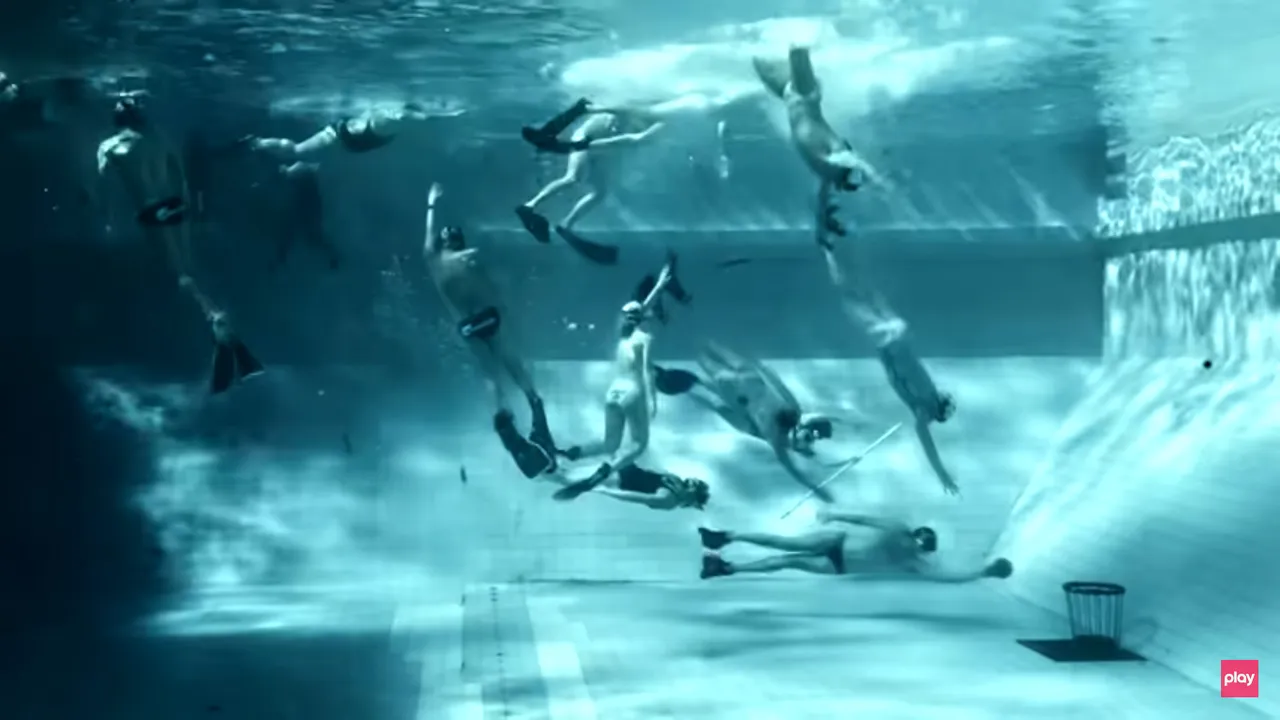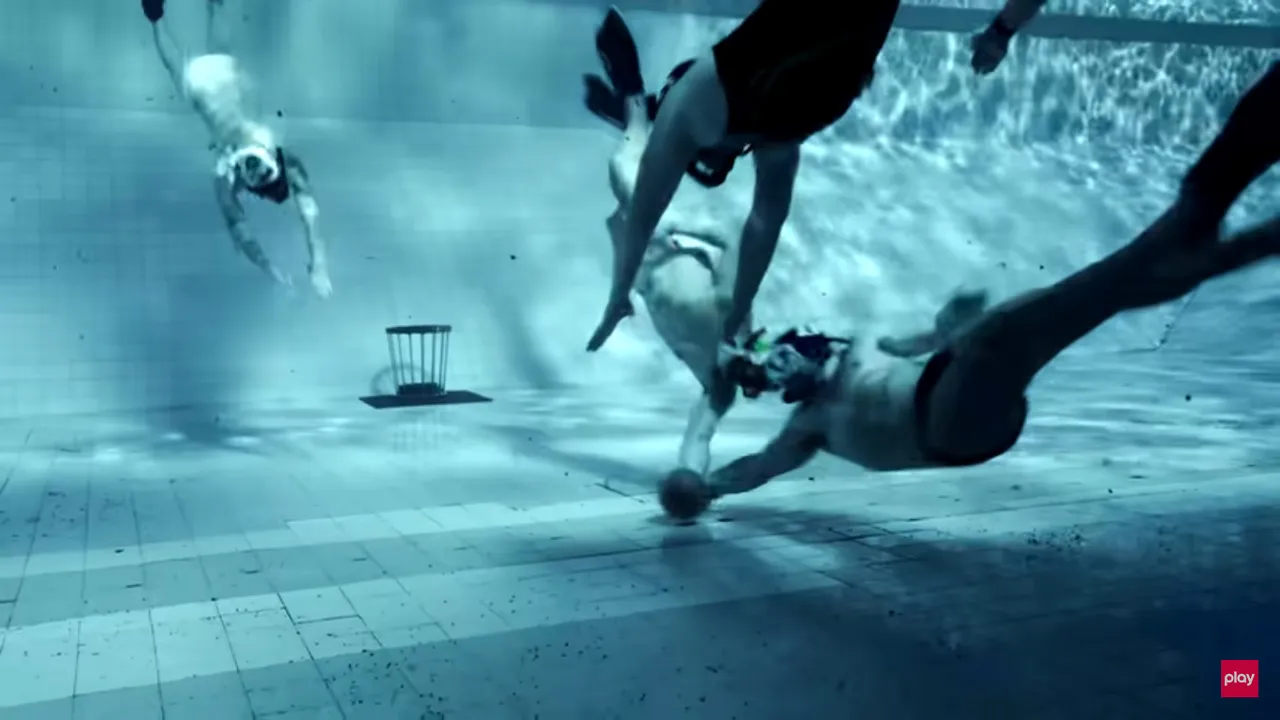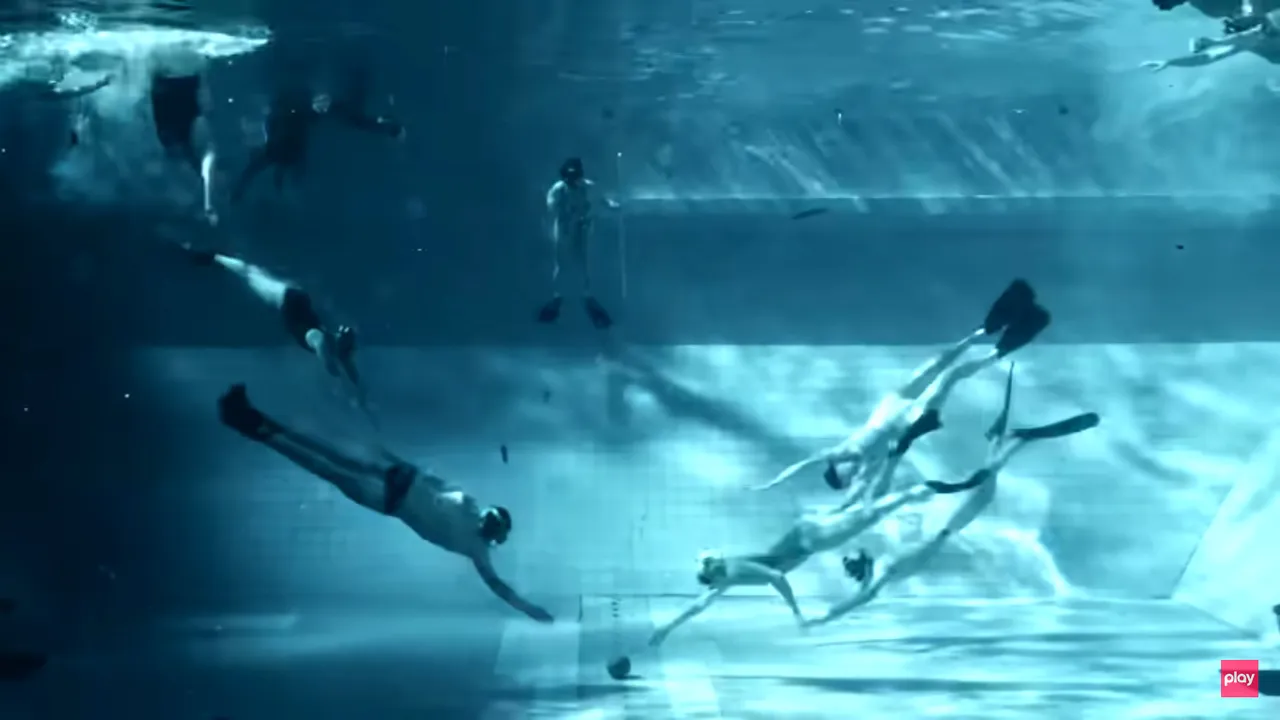
Es sabido que los deportes subacuáticos no han tenido una gran publicidad en los medios. Dentro de estos, hay modalidades que ni se conocen por la generalidad de las personas. Una de ellas es el rugby subacuático ⚽, y de ello tratará este post.
¿En qué consiste este deporte?
En realizar un juego de rugby, pero bajo las condiciones que impone el medio acuático en una piscina, las que tendrán aspectos diferenciados al deporte tradicional.
En este no podemos correr, y el lanzamiento de la pelota es limitado por la densidad del agua. El juego consiste en avanzar hasta lograr meter la pelota en unas cestas de metal inoxidable, fijadas al fondo de la piscina. El mayor ganador de puntos, sería el equipo que más ponga balones en la cesta contraria.
El balón se llena con una solución salina o con glicerina para que tenga una flotabilidad negativa. Por ese motivo, se debe aplicar fuerza en su lanzamiento para poder llegar hasta los tres metros de distancia. La resistencia del agua al balón frenará su movimiento.
Los atletas bajan y suben constantemente a la superficie para respirar. Es un deporte muy dinámico que amerita fuerza, velocidad y estrategia; y los jugadores se ubican en distintas posiciones para cumplir sus funciones: atacar, defensa y cubrir la portería.
Hay buzos con equipamiento técnico y cámaras de video, para que podamos disfrutar el partido.

¿Cómo surgió?
Nació en la ciudad de Colonia, Alemania, en 1961, con fines de entrenamiento entre buzos de distintas asociaciones.
Con el tiempo, la práctica de esta actividad se fue diversificando en ese país, hasta llegar a ser motivación en otros territorios.
Aspectos a tener en cuenta:
Los atletas juegan con gorro, máscara de buceo de poco volumen, esnórquel y aletas cortas.
Un equipo debe usar ropa de nado de color claro, y el otro con tono oscuro. Es la mejor forma para distinguirse debajo del agua.
Rango de profundidad en la piscina: de 3,5 a 5 metros.
El diámetro del balón en los partidos de equipos masculinos es mayor que en los femeninos.
Área de juego: largo de 12 a 22 metros, y ancho de 8 a 12 metros.
El agua de la piscina debe estar limpia y con transparencia. La visibilidad en el medio líquido ayuda al rendimiento deportivo, y a las lentes de las cámaras de filmación.
El tamaño de las cestas de puntuación no debe pasar de los 45 centímetros de altura.
Cada equipo tendrá seis o menor número de jugadores en el agua. La misma cantidad en la banca, y tres suplentes.
Duración del juego: 30 minutos. Divididos en dos tiempos de 15 minutos. Se detiene el cronómetro, si hay que realizar un gol, un penalti, o hay una falta. Se dan 5 minutos de descanso entre ambos tiempos de juego.
La persona que tenga el balón puede agarrar a otras, y viceversa. Sin el balón en mano, nadie puede sujetarse.
Por seguridad, no se permite el agarre en el cuello.
El balón no puede salir a la superficie del agua.
Aparte de la categoría femenina y masculina, se permiten los equipos mixtos.
La Confederación Mundial de Actividades Subacuáticas, regula las reglas del juego y planifica los campeonatos mundiales.
En cada extremo del área de juego, encontramos los bancos de expulsados, los bancos de cambio, y en el centro, el área de protocolos.
Un árbitro debe posicionarse en superficie, y dos dentro del agua a cada lado de la piscina, usando equipamiento autónomo de buceo. Así pueden visualizar cada detalle en la dinámica del juego.
Se permite el pase del balón entre los jugadores.

En Cuba, esta modalidad no está contemplada a nivel federativo. Espero que algún día se incorpore a nuestras competencias y que pueda ser del agrado de muchos.
En lo personal, ver este deporte en acción me recuerda al frenesí de los tiburones desesperados por comer.
Espero que este post les haya resultado interesante.
Gracias a los que me leyeron. Les deseo un bonito inicio se semana.
It's not a Shark frenzy: it's Underwater Rugby

It is well known that underwater sports have not been widely publicized in the media. Within these there are modalities, which are not even known by the generality of people. One of them is the underwater rugby ⚽, and this post will deal with it.
What does this sport consist of?
It consists of playing a game of rugby, but under the conditions imposed by the aquatic environment in a swimming pool, which will have different aspects to the traditional sport.
In this one we cannot run, and the throwing of the ball is limited by the density of the water. The game consists of advancing until the ball is placed in stainless metal baskets fixed to the bottom of the pool. The biggest winner of points would be the team that puts the most balls in the opposing basket.
The ball is filled with a saline or glycerin solution to give it negative buoyancy. Therefore, force must be applied to its launching so that it reaches a distance of up to three meters. The resistance of the water to the ball will slow its movement.
Athletes are constantly descending and rising to the surface to breathe. It is a very dynamic sport that requires strength, speed and strategy; and players are placed in different positions to fulfill their roles: attack, defense and goal coverage.
There are divers with technical equipment and video cameras, so that we can enjoy the game.

How did it come about?
It was born in the city of Cologne, Germany, in 1961, for training purposes among divers from different associations.
Over time, the practice of this activity diversified in that country, until it became a motivation in other territories.
Aspects to consider:
Athletes play with cap, low volume diving mask, snorkel and short fins.
One team must wear light-colored swimwear, and the other dark-toned. This is the best way to distinguish each other underwater.
Depth range in the pool: 3.5 to 5 meters.
The diameter of the ball in men's team games is larger than in women's games.
Playing area: length from 12 to 22 meters, and width from 8 to 12 meters.
Pool water should be clean and clear. Visibility in the liquid medium helps sports performance, and the lenses of filming cameras.
The size of the scoring baskets should not exceed 45 centimeters in height.
Each team will have six or fewer players in the water. The same number on the bench, and three substitutes.
Duration of the game: 30 minutes. Divided into two 15-minute halves. The stopwatch is stopped if there is a goal, a penalty, or a foul. A 5 minute rest period is given between the two halves of the game.
The person holding the ball can grab others, and vice versa. Without the ball in hand, no one can hold on.
For safety reasons, no neck grabs are allowed.
The ball may not come to the surface of the water.
Apart from the women's and men's category, mixed teams are allowed.
The World Underwater Activities Confederation regulates the rules of the game and plans the world championships.
At each end of the playing area, we find the expulsion benches, the change benches, and in the center, the protocol area.
One referee must be positioned on the surface, and two in the water on each side of the pool, using autonomous diving equipment. This way they can visualize every detail in the dynamics of the game.
Passing the ball between players is allowed.

In Cuba, this modality is not contemplated at the federative level. I hope that one day it will be added to our competitions and that it may be to the liking of many.
Personally, watching this sport in action reminds me of the frenzy of sharks desperate for food.
I hope you found this post interesting.
Thanks to those who read me. I wish you a nice start of the week.

Separador. De uso libre por/Text divider. Free use from @eve66
Fotos: capturas de pantalla de video de PlaySport en YouTube/Photos: screenshots from PlaySport video on YouTube
Texto por/Text by Andrés Brunet
Gracias por leer/Thank you for reading
Bienvenidos sus comentarios/Welcome your comments
¡Saludos infinitos!/Infinite greetings!
